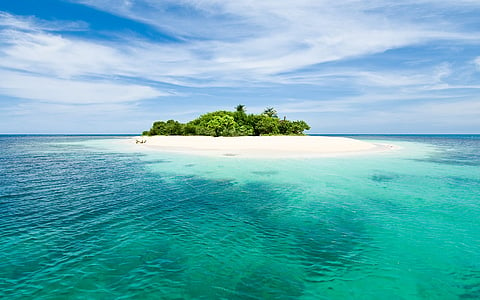

Small Island Developing States (SIDS) — among the least responsible for climate change — face losses of up to $476 billion by 2050 if adaptation measures are not accelerated, a new report by the Global Commission on Adaptation (GCA) has warned.
The 39 island countries, scattered across the Caribbean Sea, Pacific and Indian Ocean, contribute less than one per cent of global emissions but face some of the gravest consequences — rising seas, stronger storms, saltwater intrusion, and collapsing fisheries.
“We face rising seas, threats to food and water security, and we are running out of time,” said Hilda Heine, president of the Republic of the Marshall Islands, launching the State and Trends in Adaptation 2025: Small Island Developing States report. “Climate finance mechanisms were not designed with SIDS in mind. Long processes, eligibility rules, and risk standards exclude us. We are left locked out of the very support we most need. But the report also brings hope: Adaptation in SIDS is highly cost-effective.”
The vulnerability to climate change is exacerbated by the challenging financial conditions in many of the countries, reminded the report.
The financial indicators in more than 70 per cent of them show impending or deepening debt crises. Seven countries are already nearing “debt distress,” with debt-to-GDP ratios of more than 100 per cent putting them on the verge of being unable to fulfill their financial obligations. Eight more are considered to be “highly indebted.”
As a result, many small island nations are unable to make the investments in capacity-building, adaptation, and resilience that are necessary to protect their people and economies.
Despite their urgent needs, the SIDS collectively receive only $2 billion annually in international public climate finance for adaptation. This is just 0.2 per cent of total global climate finance—and most of it is concentrated in only 10 of the 39 nations, leaving the rest far behind.
The debt burden of small island nations is further worsening, with 44 per cent of their climate finance arriving as loans. Nearly two-thirds of tracked flows originate from multilateral development finance institutions, while grants from bilateral donors and climate funds remain far below potential.
In a recent report, Oxfam and CARE too reminded that these highly vulnerable countries—despite contributing almost nothing to the climate crisis—are being forced to borrow to survive its impacts.
The GCA, in its report, called for a six-fold increase in adaptation support to $12 billion annually. This matches the amount identified by island nations themselves in their national plans which include the National Adaptation Plans and Nationally Determined Contributions, the report said. A macroeconomic analysis of six island states — the Comoros, the Maldives, Mauritius, Fiji, the Marshall Islands, and Barbados — shows that every dollar invested in adaptation can yield up to $6.50 in avoided damages and new growth.
The report found that well-planned programs to strengthen water management, transport, clean energy, and climate-smart agriculture could cut climate-related losses by more than half by mid-century.
While the challenges are daunting, there are however compelling reasons for hope according to the report. It cited interesting case studies from the region.
For instance, Vanuatu is scaling solar-powered water pumps and climate insurance schemes. The Marshall Islands has installed solar arrays powering schools and community centres. The Dominican Republic is restoring mangrove forests to buffer storm surges. Bermuda’s 70 electric buses save $500,000 annually in fuel costs.
While most island nations have adequate water resources, inefficient systems waste nearly half. The average level of “non-revenue water” — water lost or unbilled — stands at 46 per cent, compared to under 30 per cent in well-performing utilities. Improving water systems is therefore one of the most cost-effective steps for SIDS, the report noted.
Tourism and fisheries — two pillars of island economies — are also at risk from coral bleaching, coastal erosion, and plastic pollution. The report called for nature-based solutions like reef and mangrove restoration, which deliver benefits five times greater than their costs by reducing flood risks and protecting livelihoods.
The GCA report called for a comprehensive strategy that connects adaptation finance, debt relief, and institutional capacity to help island nations transform their vulnerability into resilience.
It recommended closing the grant deficit in adaptation finance, integrating adaptation measures into national budgets, and expanding de-risking and blended finance mechanisms to attract private investment.
Additionally, the analysis emphasised the importance of linking fiscal relief to resilience outcomes through innovative instruments such as debt-for-nature and debt-for-climate swaps.
“Adaptation is the best value proposition in climate action today,” said Patrick Verkooijen, chief executive of the GCA. “Invest now and unlock resilience dividends in every sector—energy systems that keep the lights on after cyclones, ports and roads that remain open for trade, water networks that waste less and serve more, and food systems that withstand heat and drought.” Verkooijen said.